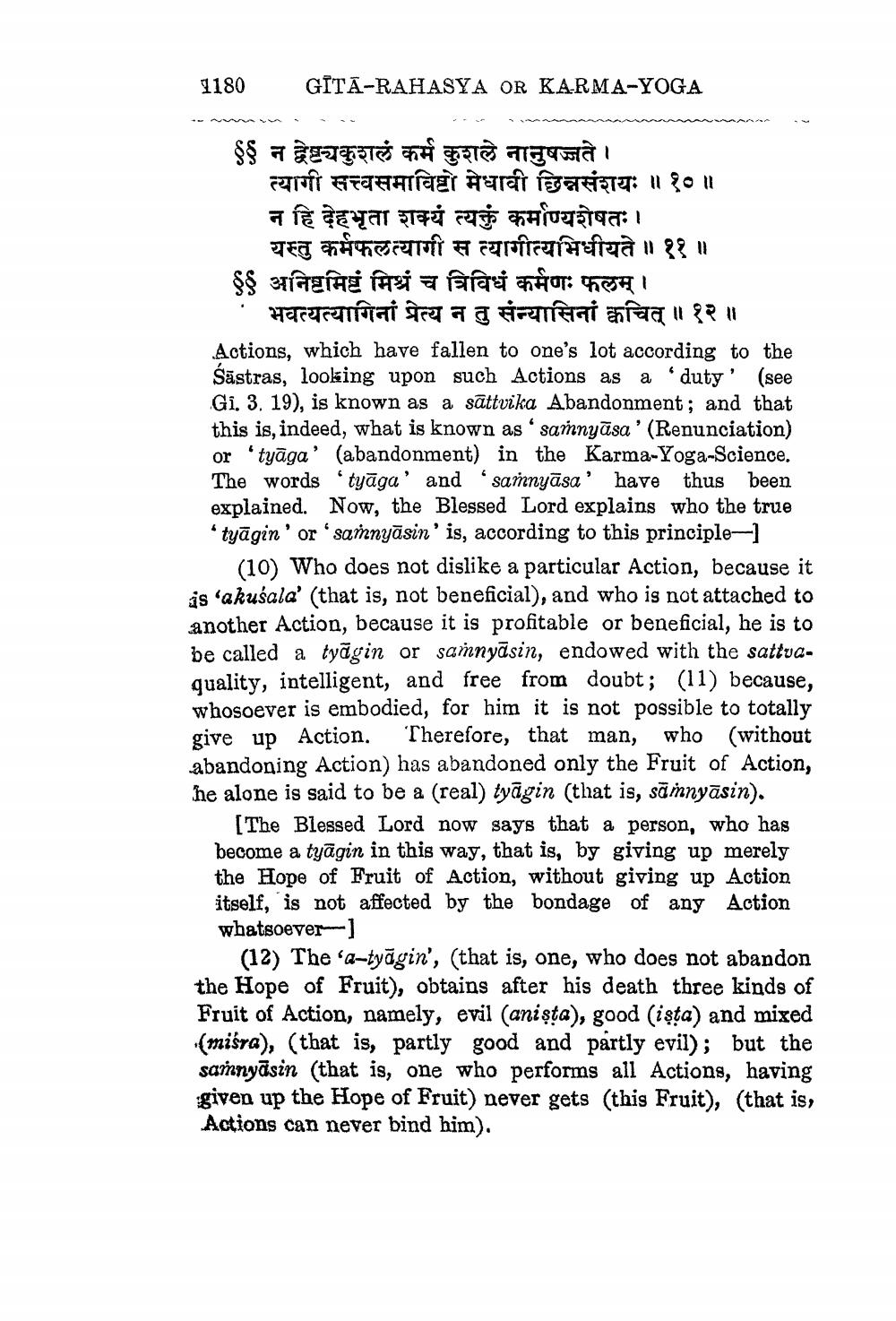________________
1180
GITĀ-RAHASYA OR KARMA-YOGA
$$ न द्वेष्टयकुशलं कर्म कुशले नानुषज्जते।
त्यागी सत्त्वसमाविष्टो मेधावी छिन्नसंशयः ॥१०॥ न हि देहभृता शक्यं त्यक्तुं कर्माण्यशेषतः।
यस्तु कर्मफलत्यागी स त्यागीत्यभिधीयते ॥११॥ 88 अनिष्टमिष्टं मिश्रं च त्रिविधं कर्मणः फलम् ।
- भवत्यत्यागिनां प्रेत्य न तु संन्यासिनां क्वचित् ॥ १२ ॥ Actions, which have fallen to one's lot according to the Šāstras, looking upon such Actions as a 'duty' (see Gi. 3. 19), is known as a sättvika Abandonment; and that this is, indeed, what is known as 'samnyāsa'(Renunciation) or 'tyāga' (abandonment) in the Karma-Yoga-Science. The words "tyāga' and 'saħnyāsa' have thus been explained. Now, the Blessed Lord explains who the true tyāgin' or 'sannyāsin' is, according to this principle
(10) Who does not dislike a particular Action, because it is 'akušala' (that is, not beneficial), and who is not attached to another Action, because it is profitable or beneficial, he is to be called a tyāgin or samnyasin, endowed with the sattva. quality, intelligent, and free from doubt; (11) because, whosoever is embodied, for him it is not possible to totally give up Action. Therefore, that man, who (without abandoning Action) has abandoned only the Fruit of Action, he alone is said to be a (real) tyāgin (that is, samnyāsin).
[The Blessed Lord now says that a person, who has become a tyāgin in this way, that is, by giving up merely the Hope of Fruit of Action, without giving up Action itself, is not affected by the bondage of any Action whatsoever
(12) The 'a-tyāgin', (that is, one, who does not abandon the Hope of Fruit), obtains after his death three kinds of Fruit of Action, namely, evil (anista), good (ista) and mixed (miśra), (that is, partly good and partly evil); but the samnyāsin (that is, one who performs all Actions, having given up the Hope of Fruit) never gets (this Fruit), (that is, Actions can never bind him).




